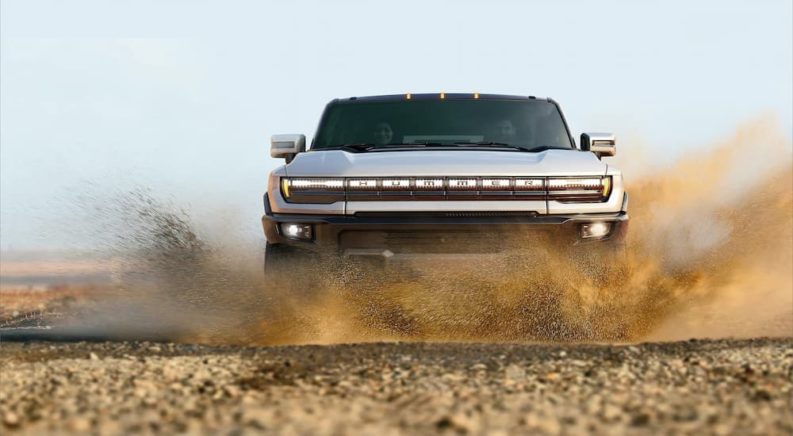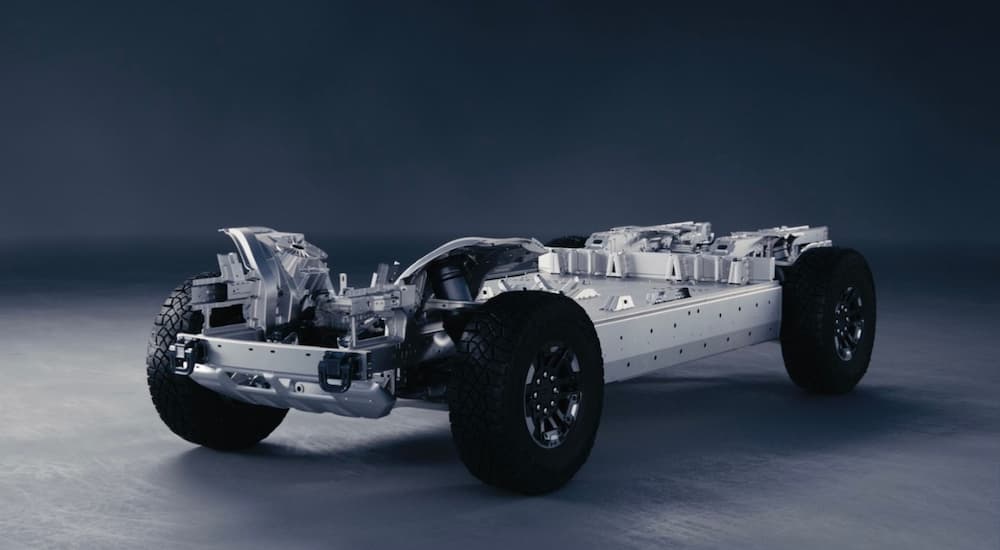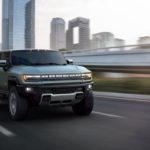GM has a problem: on the one hand, they’ve been very outspoken about their goals for pushing new EV models out and stated, repeatedly, how committed they are to an all-electric future. On the other hand, however, their actions have been deplorable at coming through with model announcements and releases that push them toward hitting these goals. I’m not here to take cheap shots at any company; I simply can’t help but notice that as the clock is ticking and as the calendar changes to a new year, the deadlines GM has set for itself are drawing closer, with little to show.
All of this is pretty plain to see in general, since GM’s various lineups are on display, but the problem has become even more pointed with the recent LA Auto Show. This is because GM was barely there, and their EV presence was effectively nil – especially since two of their four brands weren’t even on display. There are plenty of reasons for this, and I know that COVID and the chip shortage have likely made things a lot more difficult for GM than they had expected, but none of those things explain where GM is at in hitting its goals. It makes one wonder: was it all talk, or is GM still planning on trying to meet their deadline?

2017: GM Paints Itself Into a Corner
You might be wondering why I’m specifically targeting GM when the entire auto industry is pushing toward numerous EV goals. It seems like most manufacturers at this point have stated they plan on the majority of their lineup or all-new vehicles being electric by some year. While that’s true, I’ve chosen GM because they’re a perfect case study in what’s going on, but you could easily extend what I’m going to get into here to a lot of other manufacturers (and I’ll likely take a look at what others are doing in the coming months).
Really, it comes down to the fact that GM has given a clear goal with some specific deadlines for what they want to accomplish. It all goes back to 2017 (such a simpler time in so many ways) when GM painted themselves into the proverbial corner by committing to “at least 20 new all-electric vehicles that will launch by 2023.” This isn’t from an internal memo or something that was said in passing as a potential target – this is from a press release that GM issued, and it really set the stage for what they have been working toward since then.
When GM said this in 2017, it was a huge statement – they were committing themselves to developing and launching 20 new EV models within the following six years. In fairness, this promise included all of GM’s brands, so these 20 models were expected across the lineups of Chevrolet, GMC, Cadillac, and Buick, and it also would include consumer models and potential commercial vehicles. I’m not looking for 20 new EV models just from Chevy or anything, but it was a significant goal that they set for themselves, with just six years to make it happen. That might’ve seemed like a lot of time in 2017, but as we start 2022, the clock is definitely ticking.
What’s Gone Right and What’s Gone Wrong
There’s no denying that GM has been hard at work on meeting this goal, especially when it comes to designing some high-profile models. They’ve also done a good job of getting into the essential aspects of trying to hit this goal, most notably in the development of their new Ultium battery platform. The biggest hurdle for EV development is designing a battery and motor system that works. If a company tries to start from scratch with each model, then it will take a geological age for them to introduce a full EV lineup.
With the Ultium platform, GM has worked out the perfect way to speed up development on EV models across their brands. Since they will all share this platform, it’s easy for designers working on a Chevy truck to learn from what the folks who built a GMC SUV figured out, or for notes to pass from Cadillac to Buick, etc. It makes a lot of sense, and I have no doubt that this platform is the key to GM coming anywhere near hitting the goal it has set for itself.
There’s also been a lot of excitement for the EV models that GM has announced. The return of the GMC Hummer as an all-electric model is huge, and everything I’ve seen about it looks fantastic. Similarly, the buzz on the Cadillac Lyriq has been incredible. Looking further down the road, the Cadillac Celestiq looks like it will take things even further and really showcase everything GM will have to offer. Plus, initial success and excitement around the Chevy Bolt EV and Bolt EUV have both been terrific, that is, of course, until they weren’t.
Perhaps the single most disastrous thing for GM’s EV push, at least at the moment, is the way they handled the battery fires with the Bolt EV. They had an opportunity to get ahead of it and issue a proper recall on the Bolt EV batteries back in 2020, but instead, they tried to fix it through software patches and updates. This just kicked the proverbial can down the road, and now, at the end of 2021, they’ve issued a full recall on all Bolt batteries, including the latest models and the Bolt EUV, with production halted briefly. It’s a complete disaster that highlights GM’s inability to solve the problem the right way the first time, and it showcases where they’re at.
Where GM Is at Today
All of this brings us to the end of 2021. In 2017, GM said they would “launch” at least 20 new vehicles by 2023 – to me, that means actually releasing them. Since then, they’ve released a new generation for the Chevy Bolt EV and a Bolt EUV based on the same platform. That’s two from Chevy – there’s a Silverado EV in the works that will likely be available in 2023, so that’s three.
GM has announced two Cadillac models in the works, and the Lyriq should be available next year as a 2023 model; the Celestiq won’t make the 2023 deadline. The GMC Hummer Pickup will hopefully be available next year (though the SUV model is likely a 2024 option), which brings the tally from GM up to five if we give them credit for the updated Bolt EV and the Bolt EUV. Of course, the current chip shortage and other issues could mess some of these up, but I’m giving GM the benefit of the doubt here. Seeing all of this, I can’t help but wonder…
Can GM Meet Its Goals?
Even if we’re incredibly generous and say that a full reveal of a vehicle is good enough to count for the “launch” that GM promised, we’re up to seven models, at best, with the inclusion of the Cadillac Celestiq and the GMC Hummer SUV. Even if we give them until the end of 2023 to hit their goal, can GM manage to “launch” 13 more EV models in the next two years? There are rumors of a Buick model on the horizon, so that’s one, but that still leaves 12 more to go. I’m certainly curious to see how GM might pull it off, though I suspect they may just fall a bit short.





